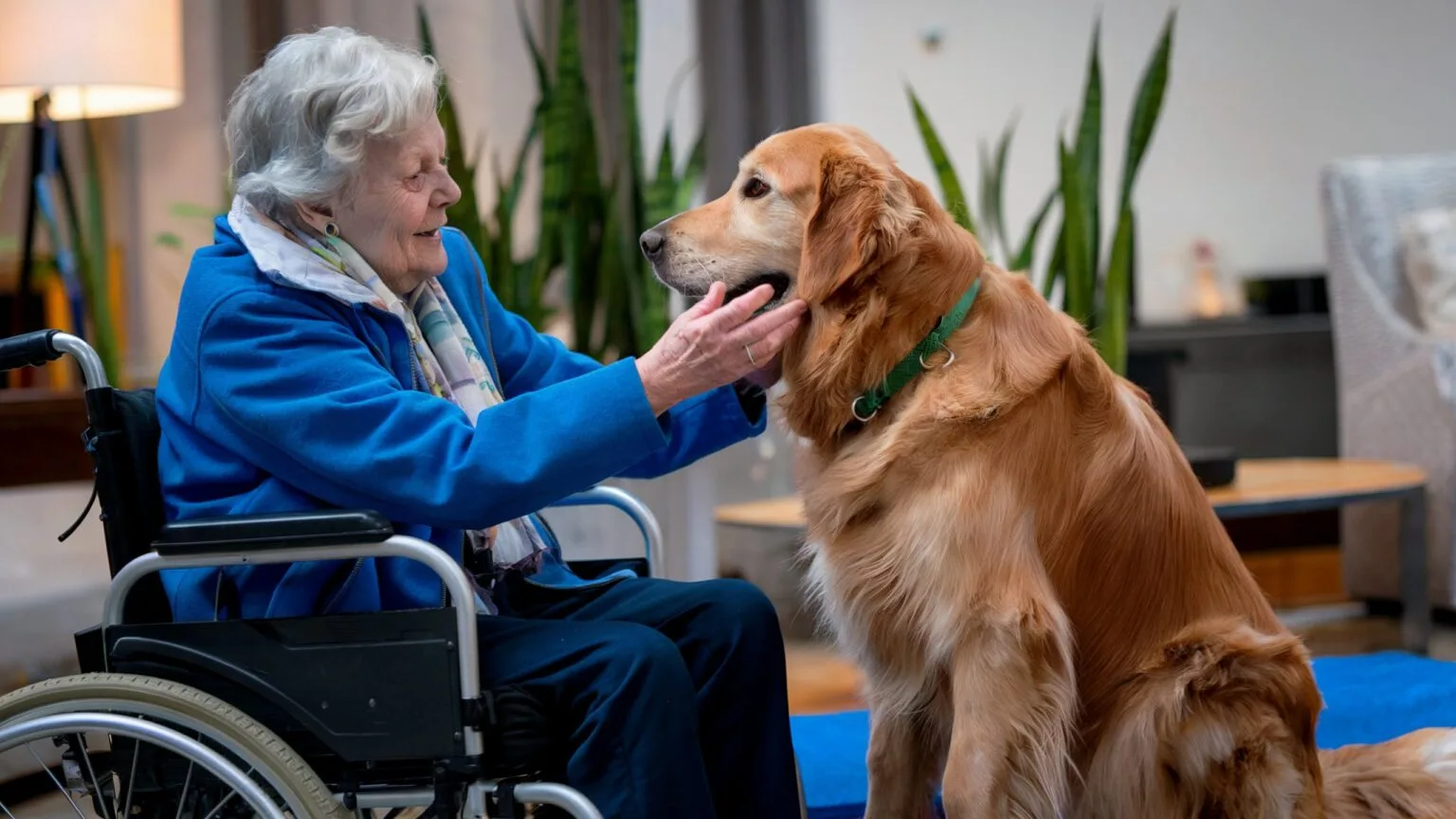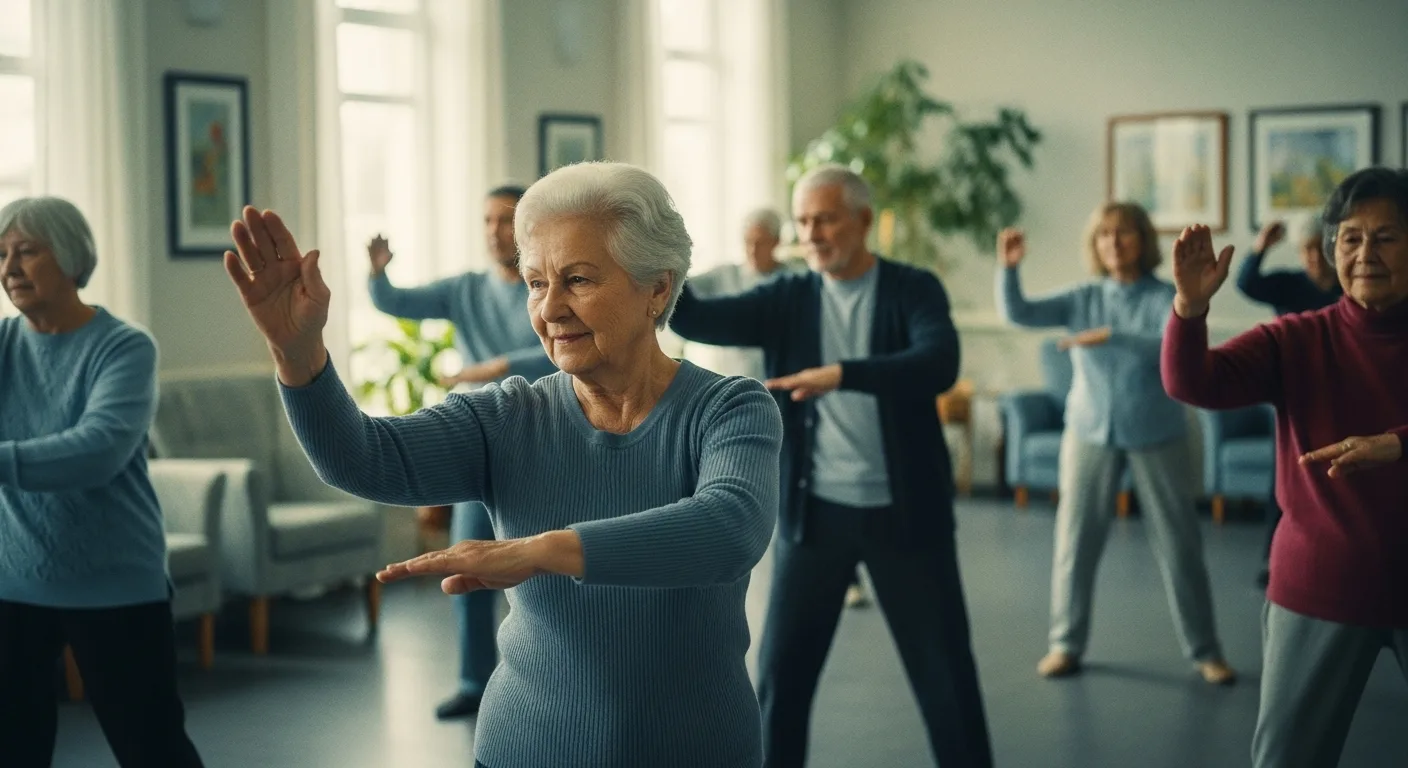Engaging seniors with dementia in meaningful activities is more than just a way to pass the time – it’s a crucial part of care. Purposeful activities can spark joy, evoke memories, and even improve behavioral symptoms. According to the Alzheimer’s Association, activities for seniors with dementia can enhance quality of life, reduce agitation and wandering, and give a sense of purpose and dignity.
In fact, research shows that staying active and engaged can benefit both the psychological and physical health of people with dementia. The key is to choose activities that match the person’s interests and abilities, and to focus on enjoyment rather than achievement. Below are 10 well-researched activities for seniors with dementia, each with unique benefits and tips on why they’re a suitable choice.
1. Music and Singing
Music is a powerful, therapeutic activity for seniors with dementia. Familiar songs can reach parts of the brain that remain intact, sparking recognition and emotions even when other memories fade. Whether it’s listening to their favorite oldies, singing a beloved hymn, or gently dancing together, music often brings moments of joy and connection. Many people with dementia can remember lyrics or melodies from decades ago, because musical memory is often preserved longer than other types of memory.
Benefits of music for seniors with dementia:
- Reduces agitation and anxiety: Playing calming music or singing familiar songs can soothe restlessness and ease anxiety. It’s been noted that listening to music helps reduce agitation and behavioral issues in individuals with dementia.
- Evokes positive memories: A favorite song from youth or a melody from their wedding can trigger fond memories and moments of recognition. This can create positive feelings and comfort, even in later stages of dementia.
- Encourages engagement and movement: Music often gets seniors tapping their feet, clapping, or even dancing. This physical response provides exercise and can lift mood. Group sing-alongs or music classes (like a dementia choir) also offer social engagement and a sense of belonging.
- Allows self-expression: For those who struggle to communicate verbally, music provides an outlet. Singing or humming along to a tune allows for expression of feelings when words are hard to find. It’s a way for the person to connect and share a part of themselves with others.
Why it’s suitable: Music requires no training or recent memory – even seniors who don’t remember what they did earlier in the day might recall the words to a favorite song. It’s adaptable to any ability level: one can simply listen quietly, or actively sing and dance if able. From lullabies to rock & roll, music meets the person where they are emotionally, making it one of the most accessible and uplifting activities for seniors with dementia.
2. Arts and Crafts
Creative activities like painting, drawing, knitting, or crafting provide a wonderful outlet for self-expression when words may be failing. Many seniors with dementia take joy in art projects – whether it’s watercolor painting, molding clay, arranging flowers, or coloring in an adult coloring book. The process of creating art can be calming and gives the individual a tangible product they can feel proud of. Even simple crafts like making a collage of family photos or decorating a card can be very rewarding.
How arts and crafts help seniors with dementia:
- Stimulates the brain: Engaging in art activates various parts of the brain. Creative pursuits can stimulate the mind and improve thinking ability in people with dementia. It’s a fun mental workout that keeps neurons firing in different ways than routine daily tasks.
- Enables non-verbal expression: Painting or crafting allows seniors to express thoughts and emotions without needing to speak. For example, someone who is quiet or withdrawn might still convey themselves through colors and images. Art provides a voice when verbal communication is difficult, helping them share their world.
- Reduces stress and improves mood: The act of creating something can be meditative. Repetitive activities like coloring or knitting are known to lower anxiety and can even ease depression. Crafting often puts people “in the moment,” which can take their mind off confusion or worries. Completing a craft project — no matter how simple — also yields joy and a sense of accomplishment, which boosts mood.
- Boosts self-esteem and sense of purpose: Presenting a finished drawing or a knitted scarf gives a much-needed feeling of achievement. It reinforces the idea that the person can still do things and contribute. This enhances their self-esteem. Also, arts and crafts can be shared with others (e.g., gifting a drawing to a grandchild), providing purpose and pride.
- Maintains fine motor skills: Painting with a brush, cutting paper, or knitting with needles keeps the hands and fingers active. This helps seniors maintain dexterity and hand-eye coordination. It’s a gentle way to exercise motor skills that might otherwise decline from disuse.
Why it’s suitable: Arts and crafts can be adapted to all skill levels. Even if someone can no longer do complex projects, they might enjoy simple tasks like sorting colorful beads or brushing paint on paper just for the sensory feel. There’s no “right or wrong” in art, so seniors with dementia can experience success without pressure. Plus, creative activities can be done one-on-one or in groups, making them versatile for different care settings. The creative process engages attention and can tap into long-term positive memories (like a former artist finding comfort in painting again).
3. Puzzles and Games
Games and puzzles provide mental stimulation and fun, making them excellent activities for seniors with dementia. This can include jigsaw puzzles with large pieces, simple crosswords or word searches, matching games, or familiar board games like Snakes and Ladders, Checkers, or Dominos. Card games (like Go Fish, Uno, or simple solitaire) are also great options. The goal isn’t to challenge them with difficult gameplay, but to spark curiosity and exercise the brain in an enjoyable way.
Benefits of puzzles and games:
- Cognitive stimulation: Solving puzzles or playing thinking games is like exercise for the brain. It helps keep existing neural connections active. In fact, a study noted that playing board games could help keep brain cells active and encourage problem-solving in people with dementia. This mental workout may support short-term memory and focus.
- Sense of accomplishment: Finishing a puzzle, however simple, or completing a game can give a strong feeling of achievement to a senior with dementia. It provides a sense of accomplishment and boosts self-esteem, which is very important as other abilities decline. Even placing the last piece in a 50-piece jigsaw puzzle can light up their day with pride.
- Social interaction: Games are a natural social activity. Playing a board or card game together with family, friends, or other residents in a care home encourages communication and laughter. This social interaction helps reduce feelings of isolation. Even a quiet person may perk up with some friendly competition or teamwork.
- Maintains coordination: Many games and puzzles involve using hands and eyes together (for example, picking up puzzle pieces or dealing cards). These tasks help maintain hand-eye coordination and fine motor skills. They also engage visual perception, which can be stimulating for the brain.
- Adaptable challenge: Puzzles and games can be chosen to fit the person’s current cognitive level. For early-stage dementia, a moderate crossword or a game of checkers might be appropriate, whereas later-stage individuals might enjoy very easy puzzles, sorting games, or simply looking at puzzle pieces with assistance. This flexibility means there’s usually a game or puzzle for everyone, preventing frustration and ensuring a positive experience.
Why it’s suitable: Humans have an innate desire to solve problems and play. Puzzles and games tap into that natural drive in a gentle way. They can be done at the person’s pace, and many games can be stopped and resumed later if attention wanes. Additionally, playing games from their younger days can trigger happy memories. For instance, a former card shark might light up at the feel of playing cards. Overall, puzzles and games offer mental engagement, a bit of fun, and a break from daily routines.
4. Reminiscence Activities (Memories and Photos)
Reminiscence activities center on recalling and sharing past experiences. For seniors with dementia, long-term memories often remain accessible even as short-term memory fades. Activities in this category can include looking through old photo albums, sorting a box of keepsakes and souvenirs, listening to nostalgic music, or creating a scrapbook of their life’s memories. Even simply sitting down and encouraging the person to talk about their childhood, their wedding day, or favorite hobbies can be profoundly therapeutic.
Why reminiscence is beneficial:
- Boosts mood and comfort: Remembering happy times from the past can bring about smiles and laughter. It often creates positive feelings and contentment. For example, flipping through wedding photos might rekindle the joy of that day, improving the senior’s mood in the present moment. Reminiscence can act as a soothing distraction if the person is anxious or upset, refocusing them on something comforting.
- Reinforces identity: Dementia can make someone feel lost or confused about who they are. Revisiting personal history – through photographs, old letters, or mementos – helps seniors regain a sense of personal identity. It reminds them of the life they’ve lived, their family roles, and accomplishments. This reinforcement of self can enhance their dignity and self-worth.
- Encourages communication: Talking about the past can be easier than talking about recent events for a person with dementia. Reminiscence activities prompt storytelling and dialogue. A simple question like “Tell me about this picture” can lead to an engaging conversation where the senior does most of the talking. Even if details get mixed up, the exchange can be enjoyable. It’s a great way to engage someone who might otherwise be quiet – ask about their first job, their favorite vacations, or beloved pets, and you might hear vivid stories.
- Calming and grounding effect: Familiar memories act like anchor points in a confusing world. Reminiscing can ground a person with dementia in something real and known. If they are feeling agitated or disoriented, gently guiding them to talk about a well-known aspect of their past (like their military service or raising children) can reduce anxiety. It affirms that their memories and experiences are valued.
- Builds connections with caregivers: Sharing memories is also a way for caregivers or family members to bond with the person. Grandchildren, for instance, may learn new things about their grandparent’s youth. This strengthens intergenerational relationships and helps the senior feel listened to and respected.
Why it’s suitable: Reminiscence activities require minimal physical effort and can be done almost anywhere – at home, in a care facility, or even over a phone or video call. They draw on preserved abilities (long-term memory and the desire to communicate) rather than lost ones. Even if the person doesn’t remember specific stories, just looking at familiar faces in an album or holding a vintage object (like an old tool or piece of jewelry) can be comforting. It’s important to focus on positive memories; even if difficult topics from the past arise, a caregiver can gently steer the conversation towards happier recollections.
5. Physical Exercise (Walking and Light Exercise)
Staying physically active is beneficial for both the body and mind, making exercise an important activity for seniors with dementia. Physical exercises can be very simple and tailored to the person’s abilities. Examples include taking a daily walk, doing chair exercises or stretches, following along with a gentle exercise video, practicing yoga or tai chi, or even dancing to music in the living room. Exercise can be as straightforward as walking in a park, or as structured as a senior yoga class specifically designed for those with cognitive impairment.
Benefits of physical activity for dementia:
- Improves physical health and mobility: Regular movement helps maintain muscle strength, balance, and cardiovascular health. This can enable a person with dementia to stay independent with walking and daily activities for longer. In fact, what’s good for the heart is good for the brain – exercise improves circulation that nourishes the brain. It also reduces the risk of other health problems (like heart disease or falls) that could worsen cognitive decline.
- Supports brain function: Exercise isn’t just a physical boon; it’s a brain booster too. Studies show that physical activity can bolster mental sharpness and might slow cognitive decline. Activities like dance have been found to improve attention and memory in people with dementia, according to the CDC. The increased blood flow and brain-protective chemicals released during exercise can help counter some effects of aging on the brain.
- Reduces agitation and improves sleep: Many dementia caregivers observe that a bit of exercise helps calm the person later in the day. Physical activity can reduce restlessness and sundowning behaviors (late-day confusion or agitation). It also tends to improve sleep quality – a pleasantly tired body is more ready for a good night’s rest. Better sleep, in turn, can improve daytime alertness and mood.
- Elevates mood and energy: Exercise triggers the release of endorphins and other mood-lifting chemicals, which can ease symptoms of depression and anxiety. A short walk or some light stretching often leaves the person brighter and more relaxed than before. Over time, routine exercise can increase overall confidence and well-being.
- Provides structure and social connection: Incorporating an exercise routine (like a morning walk or an afternoon dance session) adds structure to the day, which can be reassuring for someone with dementia who thrives on routine. If done in a group setting – such as a senior exercise class or even with a walking buddy – it also offers social interaction. A 2020 study found walking was attractive to people with dementia because it provided social connection and a sense of focus and routine.
Why it’s suitable: Exercise can be adjusted to nearly every level of physical ability. Even bed-bound individuals can do simple leg lifts or arm movements with assistance. For a senior who loved sports or dancing in younger days, tapping into those interests (like tossing a ball or doing simple dance steps) can reignite their enthusiasm. Safety is important – exercises should be supervised to prevent falls and tailored to avoid overexertion. But overall, physical activities, no matter how gentle, help seniors feel alive and in touch with their bodies, which is empowering in the face of a condition that often makes one feel a loss of control.
6. Gardening and Nature Activities
Spending time outdoors and engaging with nature can have tremendous therapeutic benefits for seniors with dementia. Gardening is an especially popular activity – it could be tending a backyard garden, watering houseplants, repotting flowers, or simply sitting on the patio and smelling the roses. Other nature activities include taking a walk in a park, bird watching, or visiting a botanical garden. Therapeutic gardening programs have been developed for memory care, and for good reason: nature offers multi-sensory stimulation and a calming environment.
Why gardening and nature are helpful:
- Engages the senses: The outdoors naturally provides a rich sensory experience – the vivid colors of flowers, the scent of herbs or fresh-cut grass, the sound of birds chirping, the feel of soil or petals. These sensations can trigger positive memories and emotions. For example, the smell of jasmine might remind a senior of a garden they had in childhood. Such sensory triggers often bypass language and directly evoke happy feelings.
- Calming and soothing: Being in nature tends to reduce stress for everyone, including those with dementia. Sunshine and fresh air can alleviate anxiety and improve mood. Gardening, in particular, has a rhythmic, soothing quality – digging gently in soil or watering plants can be meditative. This can help reduce agitation and anger, providing a natural outlet for restless energy.
- Improves mood and cognition: Research indicates that spending time in a garden can benefit people with dementia by improving their mental state. One study found that therapeutic gardens led to improved cognitive function and better emotional well-being in dementia patients. Even just a short time outdoors can brighten one’s mood and provide mental stimulation from the changing environment.
- Provides a sense of purpose: Caring for living things like plants or birds gives a meaningful role. For instance, watering plants each day or refilling a bird feeder can be a simple responsibility that the person takes pride in. This sense of purpose and routine is empowering, as it shifts the individual from being a “care receiver” to a caregiver of their plants or pets in the garden. Seeing plants grow or birds return to a feeder also provides a feeling of accomplishment and joy.
- Gentle physical activity: Gardening involves bending, reaching, walking, and using fine motor skills (like picking dead leaves or planting seeds). It’s a form of light exercise that helps maintain strength and coordination. For those who use a wheelchair or walker, even tending to potted plants on a table or raised bed can be active and engaging. The physical aspect of gardening is beneficial without feeling like “exercise” because there’s a rewarding task involved.
- Connection with nature’s rhythm: The cycle of seasons, watching flowers bloom, or tomatoes ripen can be very satisfying. It connects seniors with dementia to the larger world around them. This can be especially meaningful if they spent a lot of time outdoors earlier in life – it feels familiar and normal.
Why it’s suitable: Nature doesn’t judge or rush, which is perfect for individuals with dementia. Gardening can be adapted (for instance, using easy-grip tools for arthritis or raised planters for those who can’t kneel). Even if someone cannot actively garden, passive nature activities like sitting in a park, watching fish in a pond, or simply enjoying a garden view from a window can have calming effects. Always ensure safety: avoid toxic plants, supervise around potentially dangerous tools, and provide sun protection and hydration. With simple precautions, gardening and nature activities can be a delightful way for seniors with dementia to engage their senses and find peace.
7. Pet Therapy and Animal Interaction
The unconditional love and companionship of animals can work wonders for people with dementia. Pet therapy – whether through visits from trained therapy animals or spending time with one’s own pet – has become a popular activity in dementia care. Dogs and cats are the most common therapy animals, but even watching fish in an aquarium or holding a soft plush robotic pet can be beneficial. Interactions with animals are mostly non-verbal, which suits many seniors with dementia, and animals provide affection without any expectations.
Benefits of spending time with animals:
- Reduces loneliness and isolation: A pet can be a constant friend. For seniors who may not always recognize relatives or remember recent visits, the steady presence of a friendly dog or cat can be deeply comforting. Pets offer companionship that fills the void of social isolation many dementia patients experience. Even a purring cat on the lap or a dog resting at their feet can make someone feel less alone.
- Improves mood and reduces depression: Studies have found that spending time with animals can lower depression and boost emotional well-being in people with dementia. The simple act of petting a dog releases oxytocin (the “bonding” hormone) in the brain, which can lead to feelings of happiness and calm. Many caregivers report that their loved ones become more animated and joyful during and after a pet visit.
- Calming effect and stress relief: Petting or cuddling an animal has a well-known calming effect – blood pressure can drop and breathing can slow while interacting gently with a pet. For someone with dementia who is feeling anxious or agitated, the soothing presence of a pet can significantly reduce anxiety. Stroking a cat’s fur or feeling a dog lick one’s hand can bring immediate comfort. This tactile experience often transcends cognitive impairments.
- Encourages activity and routines: If the senior is able, simple pet care tasks like throwing a ball, brushing the pet’s fur, or helping fill a food bowl can engage them physically. Walking a dog, even with assistance, provides exercise and fresh air. Having a pet around can also add structure to the day (for example, “we take the dog out every afternoon” or “we feed the cat at 5 pm”), which can be grounding for someone with memory issues.
- Stimulates communication and reminiscence: Animals often become a delightful topic of conversation. A senior with dementia might suddenly talk more while describing the dog’s antics, or reminiscing about pets they owned in the past (“I used to have a dog just like Fido!”). This can lead to storytelling and social interaction that the person might not initiate otherwise. The presence of an animal can also make visits from family easier, as it gives everyone something positive to focus on together.
Why it’s suitable: Pet therapy works on a very basic emotional level, which is often less affected by dementia than logic or memory. Even if a senior doesn’t remember an animal’s name, they remember the feeling of comfort and happiness it brings. Therapy animals are trained to be gentle and patient, making them safe companions. For those who love animals, this activity taps into a lifelong source of joy. For those who didn’t have pets before, even watching a bird build a nest outside or patting a calm dog’s head can be a pleasant new experience. Always supervise interactions to ensure safety for both the senior and the animal. If real pets aren’t feasible, robotic pets or even plush toy animals can elicit smiles and provide a cuddly, soothing object to hold.
8. Household Chores and Simple Cooking
Believe it or not, everyday household tasks can be very meaningful activities for a person with dementia. Chores that may seem mundane, like folding laundry, sweeping the floor, or drying dishes, can impart a sense of normalcy and accomplishment. Many seniors with dementia retain the “muscle memory” of routine tasks they’ve done their whole lives. Similarly, simple cooking or kitchen activities – such as peeling vegetables, mixing ingredients, or making a sandwich – can be enjoyable when done together with supervision. The goal isn’t efficiency, but engagement and making the person feel helpful.
Why chores and kitchen activities are beneficial:
- Maintains a familiar routine: Daily chores provide structure. For someone used to tidying up or cooking for their family, continuing to do these tasks (even in a simplified way) can bring a comforting sense of routine. It helps life feel normal and not solely focused on illness. For example, folding towels every morning or helping set the table for dinner each day can be a reassuring ritual.
- Gives a sense of purpose and inclusion: One of the biggest emotional challenges for seniors with dementia is feeling like they no longer have a role or purpose. Letting them help with chores addresses this by making them feel useful and needed. The Alzheimer’s Association notes that even tasks like sweeping or putting away silverware can bring a sense of accomplishment and inclusion. The person can say, “I helped do that,” which boosts self-worth.
- Familiar enjoyment: Many household tasks might trigger pleasant memories – for instance, baking cookies may remind someone of raising their children or holiday traditions. The smell of a favorite recipe or the routine of morning coffee preparation can spark contentment. These activities engage procedural memory (how to do things) which often lasts longer in dementia. A senior who struggles with names might still instinctively know how to stir batter or fold a shirt.
- Exercises motor skills: Chores and cooking involve coordination and movement: standing, reaching, stirring, folding, etc. These actions help maintain motor skills and hand strength. Even if done slowly, it’s a form of light exercise. Tasks like kneading dough or rolling pie crust (with assistance) can also be good hand therapy.
- Opportunity for social bonding: Doing chores together can be a way for caregivers and seniors to bond. It turns care time into team time. While drying dishes or chopping vegetables side by side, you can chat or share stories. This makes the senior feel less like a “patient” and more like a partner. For example, a granddaughter baking bread with her grandma provides a lovely intergenerational activity where the process is more important than the product.
Why it’s suitable: These activities tap into the person’s long-ingrained life skills. By focusing on what they can do (with modifications), it emphasizes abilities rather than disabilities. It’s important to tailor tasks to be safe – e.g., avoid sharp knives or hot stoves if the person can’t manage them, and be okay with non-perfect results (spills or a crookedly swept floor are fine). The aim is engagement and pride, not a perfectly done chore. Many caregivers are surprised by how much their loved one with dementia lights up when given a chance to help out around the house. It validates their identity as an adult who still contributes, rather than someone who is “being cared for” all the time.
9. Reading and Storytelling
Books and stories can still delight seniors with dementia, even if they can no longer read on their own. Reading aloud to a person with dementia – from classic literature, poetry, religious texts, or even newspapers and magazines – is a wonderful way to engage them. The sound of a familiar voice and the rhythm of a story can be very soothing. Additionally, storytelling doesn’t have to come from a book: reminiscing out loud (as mentioned in #4), telling family tales, or looking at picture books together are all forms of narrative engagement.
Benefits of reading and storytelling:
- Mental stimulation and imagination: Listening to a story activates the mind. It encourages the person to visualize scenes or recall knowledge. Even if they can’t read themselves, being read to can stimulate their imagination and thought processes. A well-told story might transport them to another time and place in their mind, providing a pleasurable escape or adventure.
- Maintains cognitive skills: Following a storyline (even a short one) can help practice attention and memory in a gentle way. Stopping to ask a simple question like “What do you think happens next?” can invite participation. For those in early stages, it might help preserve comprehension skills. For those in later stages, the content matters less than the soothing act of listening.
- Encourages communication and reminiscence: Reading a story or article can spark conversations. A mention of a historical event or a location might prompt the senior to say, “I remember when…” or share an opinion. Short poems or stories can evoke memories and help start conversations that bring joy and reminiscence. Even if they mostly listen, afterwards you can talk about favorite characters or how the story made them feel, thus extending the interaction.
- Provides comfort and reduces anxiety: There is a comforting, almost childlike pleasure in being read to. The cadence of a loved one’s voice can be very reassuring. This makes reading an excellent activity in the evening or before bed to ease sundowning symptoms. Familiar books, like a well-loved novel or book of prayers, can particularly provide a sense of security. Storytime can become a calming daily ritual that the person looks forward to.
- Inclusive and adaptable: Reading is an activity that grandchildren, friends, or volunteers can easily do with a senior. A grandchild can read a simple kids’ book to their grandparent, which is a lovely way for different generations to connect. Because there are books and magazines on endless topics, you can tailor reading material to the person’s interests – be it sports, gardening, history, or humor. And for those who can still read somewhat, large-print or picture-supported books are available to enable them to participate as much as possible.
Why it’s suitable: Storytelling taps into the human love for narratives, which doesn’t disappear with dementia. Since many seniors with dementia may lose the ability to initiate reading, having someone share a story with them fills that gap. It’s intellectually engaging without being demanding. Even if the person dozes off mid-story, they likely still enjoyed the soothing experience. Always be attuned to their reactions – if they seem bored or confused by a plot, switch to something simpler or more familiar (like short anecdotes, poems, or even singing a story like nursery rhymes). In any case, the act of sharing a story is more important than the content, as it creates a moment of connection and enjoyment.
10. Sensory Stimulation Activities
Sensory activities are designed to stimulate one or more of the five senses – touch, smell, taste, sight, and hearing – in order to reach seniors with dementia on a level beyond words. These activities are especially helpful for those in mid-to-late stage dementia, where cognitive and communication abilities are more impaired. Sensory stimulation can be as simple as a hand massage with scented lotion, listening to nature sounds or gentle music, looking at a lava lamp or a therapy light, tasting favorite old-time candies, or cuddling a soft stuffed animal. Another idea is creating a “sensory box” filled with items that have meaning to the individual (for example, a retired carpenter might have pieces of smooth wood, a familiar tool, and a pine-scented sachet in his box).
How sensory stimulation helps people with dementia:
- Evokes positive emotions and memories: Sensory cues can trigger powerful recollections and feelings. The feel of knit yarn might remind someone of years of knitting; the smell of apple pie might bring back memories of family holidays. By tapping into these senses, sensory activities can call up positive memories and emotions even if the person can’t articulate them. This can improve mood and sometimes spark recognition where words fail.
- Calming and reduces agitation: Gentle sensory input can have a grounding effect. For example, a soft blanket around the shoulders or a slow hand massage can relax a person who is anxious or upset. Similarly, familiar sounds (like ocean waves or a grandfather clock ticking) might soothe someone who is feeling overwhelmed. Sensory rooms or kits are often used in dementia care to help individuals relax and feel safe when they are agitated.
- Improves communication and engagement: When traditional conversation is difficult, sensory activities offer an alternative way to connect. A senior might not respond to the question “How do you feel?” but may smile when smelling a favorite flower or tapping along to a drum beat. These activities give a way to interact without words, and sometimes they even stimulate language – a scent or song might prompt the person to speak a familiar phrase or sing along. In some cases, sensory stimulation has led to improved alertness and engagement in unresponsive patients.
- Boosts overall well-being: Multi-sensory stimulation has been shown to improve mood, self-esteem, and even some cognitive functions in dementia patients. It can increase alertness in someone who is withdrawn, or conversely, provide focus for someone who is overstimulated by a chaotic environment. By catering to the person’s sensory preferences (for instance, giving a tactile person different fabrics to touch, or a visually-oriented person a slideshow of nature photos), you can improve their quality of life and daily functioning in small but meaningful ways.
- Highly customizable: Sensory activities can be tailored to the individual’s history and likes. This personalization makes them especially effective. For example, for a former baker, you might engage their sense of smell and taste by baking bread or brewing coffee. For someone who loved music, a simple old-fashioned music box could captivate them. Because you can mix and match senses (aromatherapy, texture toys, auditory stimulation, etc.), these activities can be adapted as the person’s condition changes. They also require little cognitive ability, so even as memory and reasoning fade, the person can still take part in sensory pleasures.
Why it’s suitable: In later stages of dementia, many traditional activities become too challenging, but sensory stimulation remains accessible. It meets the person where they are – on a primal sensory level – and can be incredibly comforting. There’s no right or wrong way for the person to respond; they can simply experience the sensation and enjoy it. Caregivers should observe which types of sensory input the senior responds to most positively and incorporate those into daily routines. Safety is key (avoid overstimulation or items that could be choking hazards, etc.), but within safe parameters, the possibilities are vast. Sensory activities remind us that simple pleasures like a warm touch, a pleasant aroma, or a favorite melody can reach the heart and mind when other things cannot.
By incorporating these activities into daily or weekly routines, caregivers and family members can greatly enhance the quality of life for seniors with dementia. The focus should always be on enjoyment, not correctness – it’s the experience and the emotional uplift that matter more than the outcome. Every individual with dementia is unique, so it may take some trial and error to discover which activities resonate the most. Patience and flexibility are key: one day a person may not be interested in an activity that they love on another day, due to the fluctuating nature of dementia.
What’s important is to keep trying and engaging. Even a few minutes of genuine connection – a shared laugh during a game, a quiet moment holding hands while listening to a song, a smile at a photo that rekindles a memory – can be incredibly meaningful. These activities provide a sense of normalcy, joy, and dignity for seniors with dementia, reminding us that there is still a person inside who can feel and enjoy the world around them. With empathy and creativity, caregivers can help light up moments in the lives of those with dementia, one activity at a time.
Sources
- medicalnewstoday.com Medical News Today – “30 best activities for someone with dementia.” (Anna Smith Haghighi, 2022). Highlights various activities (music, art, puzzles, etc.) and notes Alzheimer’s Association insights on how activities improve quality of life and reduce agitation.
- medicalnewstoday.com Medical News Today – “30 best activities for someone with dementia” (continued). Cites research on pet therapy reducing depression in dementia, and notes that simple chores can give a sense of inclusion and accomplishment.
- dementiauk.org Dementia UK – “Meaningful activities for a person with dementia.” Provides expert advice on music’s benefits (emotional and behavioral), and the value of reading (including reading to someone to help them reminisce and connect).
- medicalnewstoday.com Medical News Today – “30 best activities for someone with dementia” (outdoor & exercise activities section). References a 2021 study on therapeutic gardens improving cognitive function and mood, and a 2015 study showing walking provides social connection and structure for people with dementia.
- irisseniorliving.com Iris Senior Living – “What is Sensory Stimulation and Why Do People with Dementia Need It?” Discusses how sensory stimulation improves mood, triggers positive memories, and helps those with dementia communicate when they can’t express themselves with words.
- alz.org Alzheimer’s Association – “Activities to enjoy: Indoor activities.” (alz.org caregiving resources). Lists examples of simple indoor activities (like looking at photo albums, singing, folding clothes) that are enjoyable and safe for people with Alzheimer’s or dementia, emphasizing adaptability and enjoyment.











